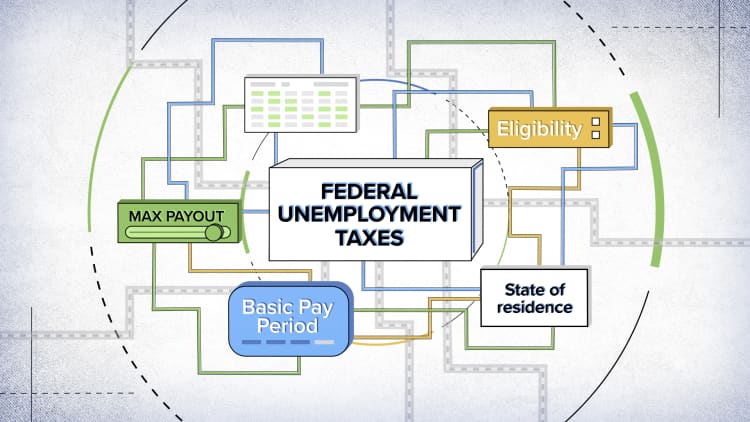
Weekly jobless claims were lower than expected last week as workers slowly returned to their jobs in the wake of rising coronavirus cases.
Claims for the week ended July 4 totaled 1.314 million, compared with the 1.39 million expected from economists surveyed by Dow Jones. The total marked a decrease of 99,000 from a week earlier, according to the Labor Department.
The four-week moving average of claims, which smooths volatility in the weekly numbers, fell 14,000 to 1.43 million.
Continuing claims fell sharply, dropping 698,000 from a week earlier to 18.06 million. The previous week's total itself was revised down by 530,000. Wall Street had been expecting 18.9 million continuing claims, according to FactSet.
Despite the better-than-expected numbers, this marked the 15th consecutive week that initial claims totaled above 1 million.
Claims under the Pandemic Unemployment Assistance program also totaled 1.039 million, an increase of nearly 42,000 from the previous week. The program provides benefits to workers, such as independent contractors or the self-employed, who otherwise would not be eligible. PUA recipients now total 14.4 million, bringing the total of those claiming benefits to a record 32.9 million.
"We still have a long road ahead of us," said Liz Ann Sonders, chief investment strategist at Charles Schwab. "These are definitely good numbers, but this is going to be a long and bumpy road."
As claims continue to subside, nonfarm payrolls are expanding. The past two months have seen growth of 7.5 million as the unemployment rate has dropped from a pandemic high of 14.7% to 11.1%.
The insured unemployment rate, a basic computation of those collecting benefits vs. the total workforce, fell to 12.4%, a half percentage point decline.
However, the jobs market is far from settled, and most economists figure that the 4.8 million growth in payrolls for June was the high-water mark for hiring. United Airlines this week put 36,000 workers on notice for potential layoffs as the airline industry struggles to regain its footing after a near-shutdown during the crisis.
At the state level, Texas saw the biggest increase in weekly jobless claims, at 20,651, according to data not seasonally adjusted. Florida saw the biggest decline, of 17,300.
The trend of elevated filings for claims comes just a few weeks ahead of the expiration for enhanced benefits through the CARES Act. Millions of unemployed have been receiving their regular compensation plus $600 per week as compensation for having to stay home through the pandemic.
Congress and the White House are working on an extension of the program, but it remains unclear what form that might take.



